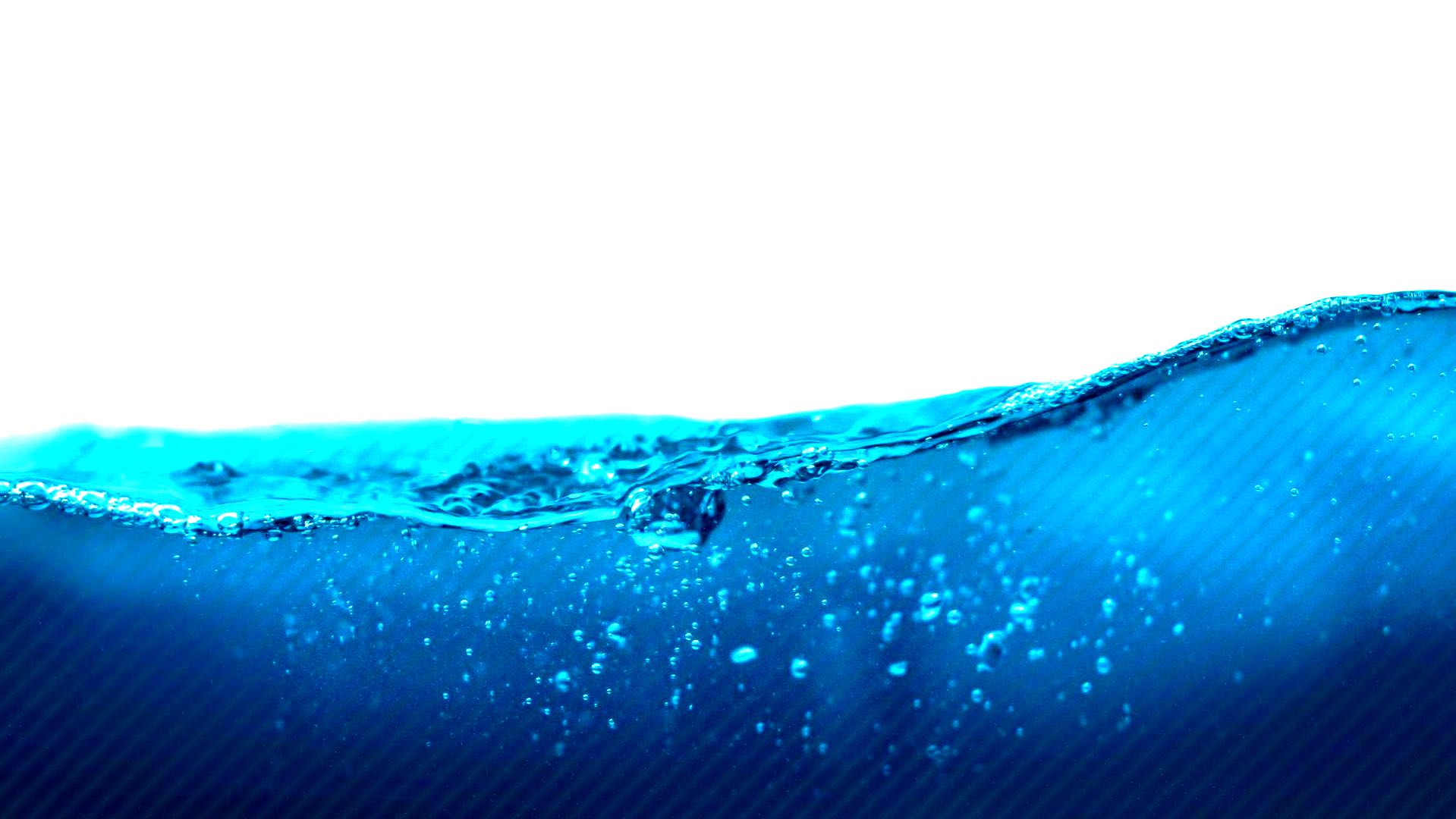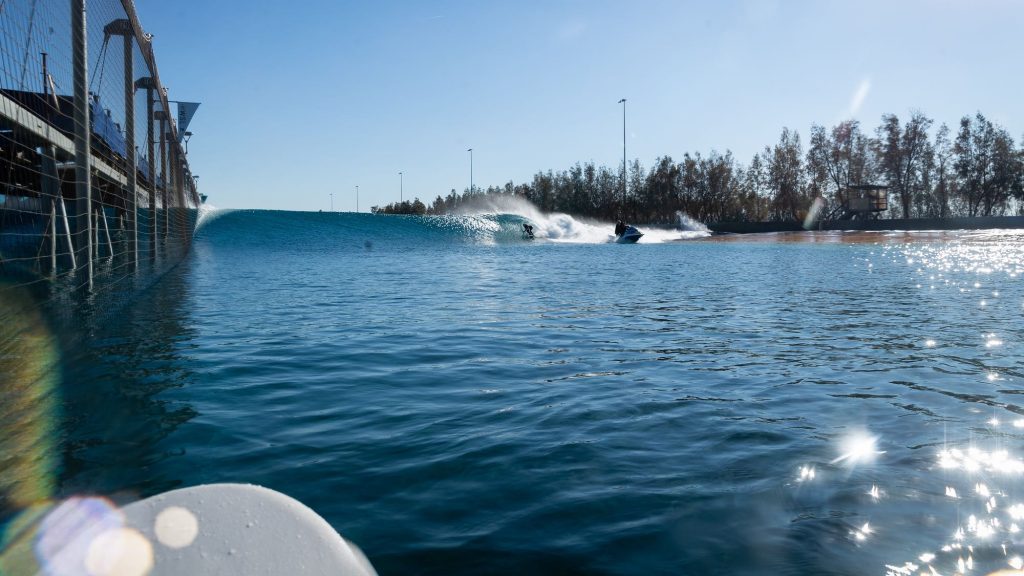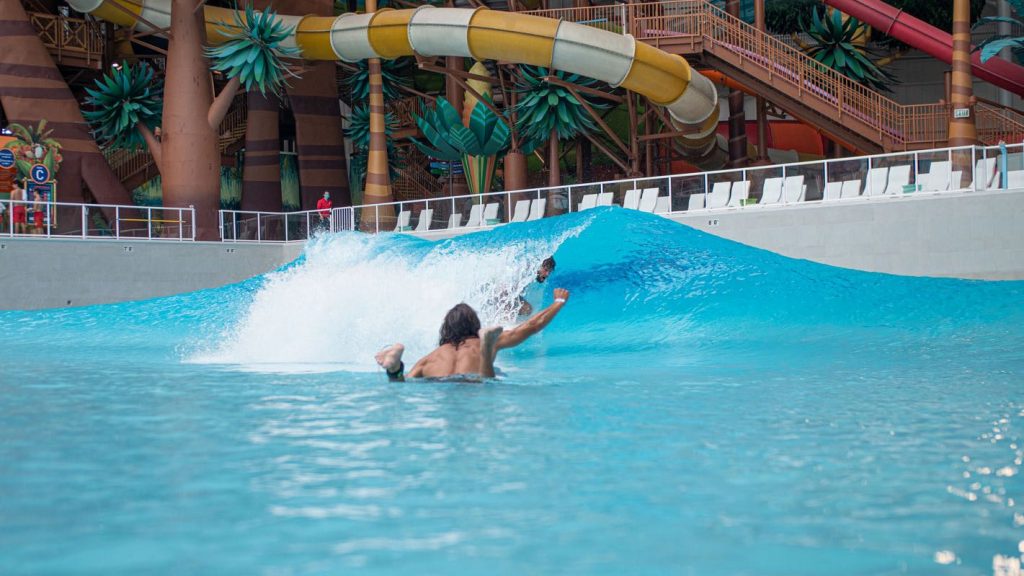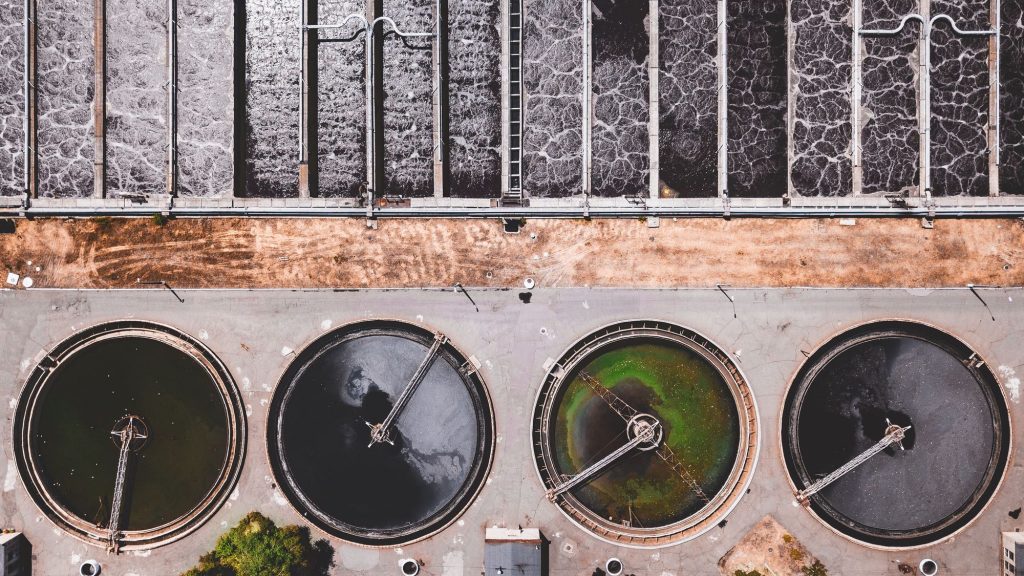Wave Pools & Evaporation: There’s more to the water loss equation than looking up at the sun

At one point Coral Mountain announced they would reduce the size of their proposed wave tank from 18.6 acres to 12 acres. Why? The development has been facing opposition from adjacent golf resort communities who cite a variety of life-compromising issues like increased traffic, but mainly water use.
Water and wave pools are a hot-button topic in places like California. Maintaining the water levels of a wave pool isn’t as simple as filling it up and forgetting about it. There’s a fine science there, as the pool water that forms man-made waves fights a constant, losing battle against the elements, thus requiring replenishment.
A standard-sized household swimming pool can lose a quarter of an inch of water per day, which translates to roughly 600 gallons per week. That’s a surprising amount, but nothing when you think about the scale of a wave pool such as the WSL’s Surf Ranch.
The Surf Ranch, which is 2,200 feet long by 500 feet wide and requires a massive 15 million gallons of water, and can lose tens of thousands of gallons per week.
But size and volume don’t make for a straightforward evaporation calculation. There are a variety of factors that contribute to evaporation rates. There’s more to the water loss equation than simple h2o-thirsty rays of sunshine.
To get a better idea of the factors that wave pool operations consider when planning and maintaining their water level, we spoke with industry expert Allen Clawson of Cloward h20, a company that helped fill Austin’s NLand pool using just rainwater.
According to Clawson the primary concerns for recreational water loss are evaporation, wind, splash out, and mechanical systems. Let’s explore how each one depletes a wave tank of water.

Evaporation
There are a host of factors that determine how fast water will evaporate from a pool. Humidity, sun exposure, water temperature, air temperature, and surface area will play a role in how fast the sun can suck up a pool’s contents.
Some conditions that will make water evaporate at greater rates are low humidity, direct sunlight, and relatively high air or water temperature.
Clawson says that to calculate evaporation estimates for wave pool projects, he formulates his numbers based on historical weather data that can be “tracked by weather stations around the world.”
And while evaporation seems like the obvious culprit for water loss, it’s really it’s only a piece of the puzzle.
“While evaporation is a key component in the overall water use story it typically only accounts for about 50% of the total water losses that we need to account for,” said Clawson.

Wind
The stronger the wind blows, the more water that evaporates. As the wind blows over a surface and carries the water molecules away, it leaves a void of relatively drier air that can then continue to pull water out of the pool. But wind does not affect a still reservoir the same as it affects an agitated pool with waves.
“Once waves are operating we expect the evaporation to increase by about 30-70% [more than] still water,” said Clawson. “This accounts for both additional evaporation due to wave action and spray/mist that is carried away by wind.”
Splash out
With so much water sloshing around a wave pool, some amount will inevitably splash out of the basin and evaporate on the surrounding surfaces. But what we might not realize is the role surfers play in removing water from the pool.
“Each person entering and exiting the surf basin takes out water with them on their body and board,” said Clawson. “On average this is about 1.5 liters of water per person, or as much as 5 liters on someone wearing a wetsuit.”
Clawson went on to put things in practical terms saying, “If the venue has capacity for 1000 daily surf users, we’d estimate 1,500 liters/day [lost] in summer and 5,000 liters/day [lost] in cooler months.”

Mechanical systems
Lastly, the mechanical systems installed in the pool are responsible for discharging water too.
“We estimate for water discharged in cleaning filters depending on a couple of different available technologies that allow for either more efficient filter operation or potential reclamation of discharged water.”
As difficult as it may seem to calculate water loss through the aforementioned factors, a wave pool engineer will tell you it’s just the beginning.
“The more detailed engineering analysis starts with an energy balance model – considering all energy sources in or out of the water,” said Clawson. “Evaporation is one of the primary factors, along with radiation, convection, conduction, and mechanical energy.”
“This model results in a far more accurate estimate of water temperatures through the year and thus better base evaporation calculations. We also refine the other numbers based on the venue design, operational characteristics, technologies employed, incoming water quality, etc.”
The Wave in Bristol told us that the net evaporation rate for their surf lake will differ from year to year, but on average the annual water requirement is equivalent to that used to maintain a high quality grassed sports ground of a similar size. So in Bristol’s case, that’d be a 4.4 acre sporting field if such a giant thing existed. The company added that it uses only about 6% of the water used to irrigate an 18-hole golf course annually.
In case you needed a refresher in basic evaporation science (we did!), here is a blue spermatozoid-looking thing with a mustache to explain.
What About the Deserts?
It’s impossible to cover this topic and not talk about the deserts of California – apologies for the detour, but it’s part of the overall water use discourse.
“Our surf pool holds roughly 7 million gallons of water (26 million liters),” said a spokesperson for DSRTSurf. “Between evaporation, filtration, maintenance, and other ancillary items, we will use roughly 24 million gallons each year. While this sounds like a lot, 24 million gallons is roughly equivalent to just 1.3 holes of golf at the average 18 hole course in the Coachella Valley.”
The big argument right now to defeat surf parks in the desert of California is the lack of water in this region. But all four upcoming wave pools have been approved to access and use current water supplies. Thermal Beach Club, Coral Mountain, DSRT and The Palm Springs Surf Club got the greenlight to fill their wave tanks.
This may seem counter-intuitive in a state wrestling with drought, but the system works on a level not readily apparent to the general public.
Katie Evans, communications and conservation director at the Coachella Valley Water District (the ones who approve water use for projects) explained in a recent article that their agency’s job is solely to look at water use on a proposal-by-proposal basis.
“The Coachella Valley Water District is not a land-use agency, and doesn’t have the authority to approve or deny any type of development,” Evans told the Coachella Valley Independent. “Instead, our role is to evaluate the water supply assessment and then provide the information to the land agency about our findings. Whenever a development comes in, they are required to evaluate the amount of water they are going to be using through formulas, and provide that information to us.”
Predicting, measuring, and understanding exactly how much water evaporates from a wave pool is a key piece of information, especially when planning the construction of a new surf park or performing a business feasibility study.
As wave pool technology continues to advance, we can surely expect technology that reduces water loss to advance as well. It’s not as sexy as creating the machine that makes a wave, but it’s another piece of the puzzle that can make operations more efficient, affordable, and sustainable.
Related Coverage
